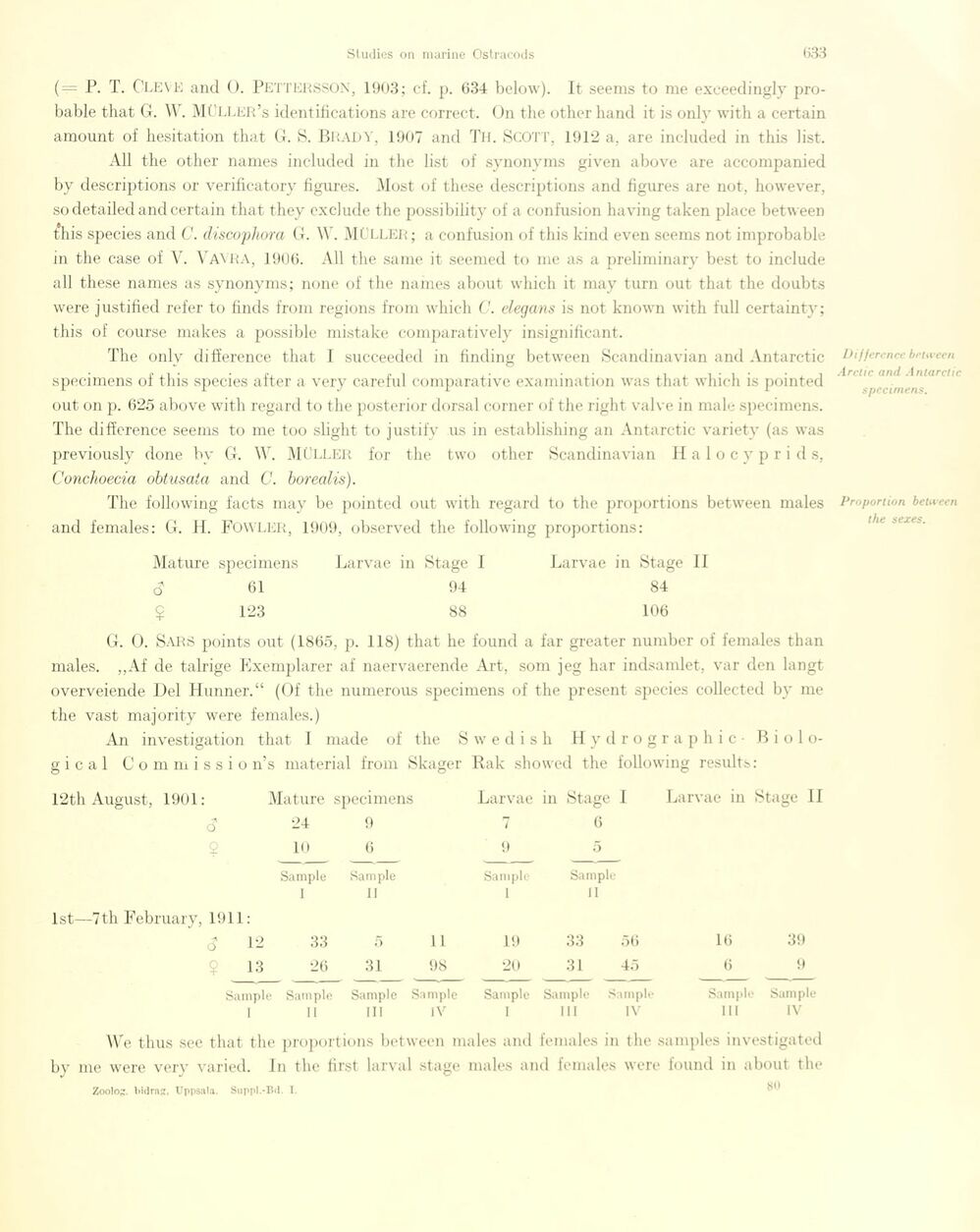
Full resolution (JPEG) - On this page / på denna sida - Sidor ...

<< prev. page << föreg. sida << >> nästa sida >> next page >>
Below is the raw OCR text
from the above scanned image.
Do you see an error? Proofread the page now!
Här nedan syns maskintolkade texten från faksimilbilden ovan.
Ser du något fel? Korrekturläs sidan nu!
This page has never been proofread. / Denna sida har aldrig korrekturlästs.
(== P. T. Clevk and 0. PETTERSSON, 1903; cf. p. 634 below). It seems to me exceedingly
probable that G. W. MÜLLER’s identifications are correct. On the other hand it is only with a certain
amount of hésitation that G. S. BRADY, 1907 and Tu. SCOTT, 1912 a. are included in this list.
AU the other names included in the list of synonyms given above are accompanied
by descriptions or verificatory figures. Most of these descriptions and figures are not, however,
so detailed and certain that they exclude the possibility of a confusion having taken place between
this species and C. discophora G. W. MULLER; a confusion of this kind even seems not improbable
in the case of V. Vayra, 1906. All the same it seemed to me as a preliminary best to include
all these names as synonyms; none of the names about which it may turn out that the doubts
were justified refer to linds from regions from which C. elegans is not known with full certainty;
this of course makes a possible mistake comparatively insignifiant.
The only difference that I succeeded in finding between Scandinavian and Antarctic
specimens of this species after a very careful comparative examination was that which is pointed
out on p. 625 above with regard to the posterior dorsal corner of the right valve in male specimens.
The difference seems to me too slight to justify us in estabfishing an Antarctic variety (as was
previously done by G. W. Müller for the two other Scandinavian Halocyprid s,
Conchoecia obtusaia and C. borealis).
The following facts may be pointed out with regard to the proportions between males
and females: G. H. FOWLER, 1909, observed the following proportions:
Mature specimens Larvae in Stage I Larvae in Stage
7\ O 61 94 84
? 123 88 106
G. O. Sars points out (1865, p. 118) that he found a far greater number of females tlian
males. „Af de talrige Exemplarer af naervaerende Art, som jeg har indsamlet, var den langt
overveiende Del Hunner.“ (Of the numerous specimens of the present species collected by me
the vast majority were females.)
An investigation that I made of the Swedish Hydrographie- Biol
o-gical C o m m i s s i o n’s material from Skager Rak showed the following results:
12th August, 1901: Mature specimens Larvae in Stage I Larvae in Stage 11
c? 24 9 / 6
2 10 6 9 5
Sample Sample Sample Sample
1 11 1 11
Ist—7th February, 1911:
6 12 33 5 11 19 33 56 16 39
$ 13 26 31 98 20 31 45 6 9
Sampl e Sample Sample Sample Sample Sample Sample Sampli .> Sample
1 II III IV I III IV III IV
We thus see that the proportions between males and females in the samples investigated
by me were very varied. In the first larval stage males and females were found in about the
Zoolos. bidrog. Uppsala. Suppl.-Bd. 1.
IJ i f feren ce between
Arclic and Antarctic
specimens.
Proportion between
the sexes.
<< prev. page << föreg. sida << >> nästa sida >> next page >>